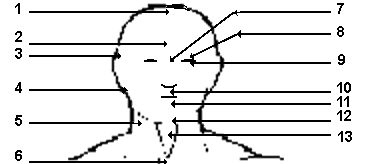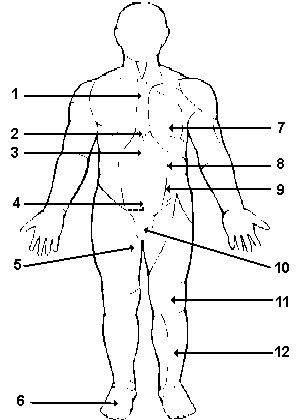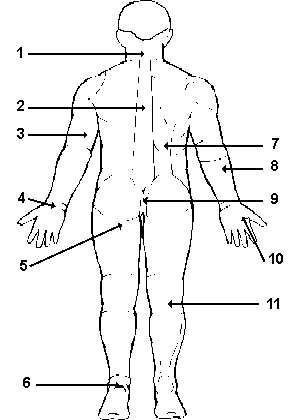current workout=
an intence stretch
100 jumping jacks
100 regular push ups
100 pushups on knuckles
60 pushups with hands in a dimand shape
20 pushups in a handstand
20 minutes of abdominal excersizes
5 mile run (half a mile sprint 1 mile run half mile sprint ect.)
Current studies=
Tae Kwon Do
current belt Red Belt (2nd Geup)
The color red indicates danger. The student is warned to practice the control of his/her movements. The color red also warns an opponent.
Knowlage in Tae Kwon Do=
Self defense
(Hosinsul) Mostly Practices A Circular Defence
Hosinsul (self defense) is one of the four principles of tae kwon do. Although tae kwon do is a "self defense" sport in itself, it focusses on high and spinning kicks which are not very suitable for real life (street) application. Hosinsul is a mixture of all kinds of techniques, including grappling/locks as well as depending against armed attackers etc.
Self defense is something that cannot be practised alone. You will need a partner that has equal strength. You will learn how to react (and how not to react), proper freeing techniques, locks and strangling techniques.
The following techniques are generally (this is not a rule, of course) practised (where the opponent either uses his body (i.e. hands), a knife or a stick):
•Control techniques
•Freeing techniques (Paegi)
•Termination techniques
You will often see a big resemblance between the self defense techniques used in tae kwon do and those applied in Hapkido.
Linear vs. Circular
There are two sorts of self-defense. The hard or linear way and the soft or circular way. In the linear form one uses arms and legs to block a strike of the opponent. The advantage is that there is a direct counter-threat, which results in pain for the opponent. The disadvantage is that this method requires a lot of power and it may look extremely violent for outsiders. The circular form has a different view. Here you use the power and speed of the opponent to neutralise him/her using circular movements. The advantage is that you can neutralise your opponent without hurting him and that no strength is required. The disadvantage is that it takes a lot of skill and practise to come to the necessary level. You will most likely use a combination of both.
Blocking techniques (Maggi)
Ahre maggi --------- Low block
Momtong maggi ---- Middle block
Eolgul maggi -------- High block
Geudeureo maggi -- Fist of one arm supports the other arm by the elbow
Sonnal-bakat maggi Block with knifehand, from inside to outside
Gawi maggi -------- "Scissor" block: With one hand ahre maggi, the other one a momtong-bakat maggi
Eotgalyo maggi ----- 'X'-block
Hechyo maggi ------- 'Wig'-block
Bituro maggi --------- Twisting block
Offence
Stances (Sohgi)
The following words are often used as commands. If this is the case, the name of the stance is usually followed by the command "Joonbi", which means to get ready into that stance. 'Naranhi' sohgi is the beginning of each style form. It is not common to give this stance as a command, so here only the term 'joonbi' is used.
Naranhi Sohgi --'Parallel' stance
Pyonhi Sohgi ---Ready stance (i.e. "at ease" wink
Moa Sohgi ------'Closed feet' stance
Ahp Sohgi ------Walking stance
Ahpkubi Sohgi -Forward stance
Dwikubi Sohgi -Backward stance
Juchoom Sohgi-'Horse riding' stance
Bum Sohgi -----'Tiger' stance
Koa Sohgi ------'Twisted' stance
Arm techniques
Eolgul jireugi ---------High punch
Momtong jireugi -----'Middle' punch
Sonnal mok anchigi -With knifehand strike at neck
Pyeonsonkut jireugi -Spear fingers
Doobeon jireugi ------Double punch
Kaljaebi ---------------'Strangle' punch
Kicking techniques (Chagi)
Ahp-cha-gi -------------Front kick
Dolryo-cha-gi ----------Round kick
Naeryo-cha-gi ----------Axe kick/Downward kick
Yop-cha-gi --------------Side kick
Dwi-cha-gi --------------Backward kick
Hooryo-cha-gi ----------Hook kick
Bandae-dolryo-cha-gi -Spinning hook kick
Dwi-dolryo-cha-gi ------Spinning hook kick
atonamy stuff=
Vital Points
(Keupsoh)The vital points of the body are listed below. A vital point is a part of the body that, when attacked in the right way (force, angle, accuracy), can cause paralysis, unconsciousness or even death. Attacks to nerves can lead to nausea, headaches or worse.
wahmbulance This information should only be used to increase your knowledge of the body, it is not meant to be used without the supervision of a qualified instructor. wahmbulance
The impact on vital points is indicated by numbers as followed:
1=Moderate pain
2=Sharp pain
3=Severe pain
4=Unconsciousness or temporary paralysis
5=Fatal
The body has about 280 vital points so this list is far from complete. But good enough for RPing I gues I will add more
The front of the head

Number--------Description---------Result of light impact Result of full-power attack
1----------------Top of head--------------2 ---------------------- 4
2 --------------- Forehead --------------- 2 ---------------------- 4
3 --------------- Temple ----------------- 3 ---------------------- 5
4 ---------------- Cheekbone ------------ 2 ---------------------- 4
5 --------------- Neck artery ------------- 3 --------------------- 5
6 -------------- Cervical trachea --------- 3 --------------------- 5
7 --------------- Glabella ----------------- 2 --------------------- 4
8 -------------- Intraocular pressure ---- 2 ---------------------- 4
9 --------------- Eyeball ----------------- 2/3 -------------------- 4/5
10 --------------- Philtrum ---------------1/2 -------------------- 3/4
11 ---------------- Jaw --------------------- 2 --------------------- 4
12 ---------------- Chin -------------------- 2 --------------------- 4
13 ------------- Adam's apple ------------- 3 --------------------- 5
The front of the body

Number -------- Description ----- Result of light impact Result of full-power attack
1 ----------- Center of the torax ------- 2 ---------------------- 4
2 --------- Lower end of sternum ------ 3 ---------------------- 5
3 -------------- Solar plexus ------------ 3 ---------------------- 5
4 -------------Center of abdomen ------ 2 ----------------------- 4
5 ----------------- Inner thigh ----------- 2 ----------------------- 4
6 --------------- Center of instep - -------2 ---------------------- 4
7 -------------------- Brest --------------- -1 ---------------------- 3
8 ---------------- Thorax flank ------------ 2 --------------------- 4
9 -------------- Flank pit of waist --------- 2 ---------------------- 4
10 ------------------ Groin ----------------- 3 ---------------------- 5
11 ------------- Upper knee-edge --------- 2 ---------------------- 4
12 --------------Shin ----------------------- 1 --------------------- 3
The back of the body

Number ------- Description ------ Result of light impact Result of full-power attack
1 ---------- Back of the neck ---------- 3 ----------------------- 5
2 ----- (several parts of) backbone --- 3 ---------------------- 5
3 ------ Outside of upper arm --------- 1 ----------------------- 4
4 ------------ Outerwrist ---------------- 1 ----------------------- 3
5 ------------- Hipnerve ----------------- 2 ----------------------- 4
6 -------------- Achilles heel ------------ 2 ----------------------- 4
7 ---------------- Kidneys ---------------- 2 ---------------------- 4
8 -------------- Elbow (just below) ------ 1 ----------------------- 3
9 ---------------- Coccyx ----------------- 2 --------------------- 4/5
10 ---- Pit of thumb and first-finger ---- 2 ---------------------- 4
11 -------------- Kneepit ----------------- 1 ----------------------- 3
I will be using this list alot in fights

